Low-Tech and No-Tech TESOL Solutions
Today I gave a presentation at the Central Florida TESOL fall conference. I know a lot of you who read this blog are also English teachers, so I thought I'd share some of the information from my presentation with you here as well.
As many of you know, I spent 2008 in Kyrgyzstan teaching English. (While the blog that I kept while I was there is no longer online, I am working on getting part of it back online, and I will certainly link to it from here when I do.) In 2008, I taught at The London School, located in Bishkek, Kyrgyzstan. (If you know me, you might notice a picture of me in my pjs on their website!) Now, since I know when I typically mention Kyrgyzstan, most people look at me in confusion, here are some helpful maps:

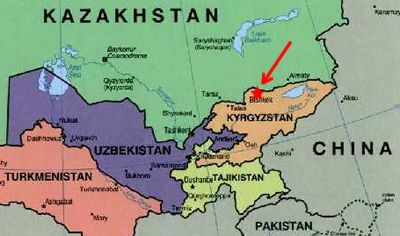 That red arrow points to Bishkek.
That red arrow points to Bishkek.
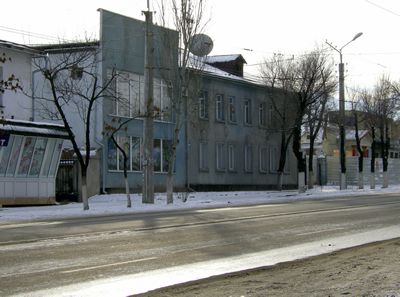 This is The London School. The classrooms were in the tall grey-blue building, and the teachers lived in the grey building on the right.
This is The London School. The classrooms were in the tall grey-blue building, and the teachers lived in the grey building on the right.
 This was my classroom as I saw it on my very first day in Bishkek. As you see from this picture, we have electricity. And a TV and a VCR. I also was given a stereo/CD/tape player. I had electric-powered speakers that allowed me to use my ipod in class, and I could use my laptop in class if I needed to as well...
This was my classroom as I saw it on my very first day in Bishkek. As you see from this picture, we have electricity. And a TV and a VCR. I also was given a stereo/CD/tape player. I had electric-powered speakers that allowed me to use my ipod in class, and I could use my laptop in class if I needed to as well...
It wasn't the most high-tech classroom in the world, but it wasn't the least high-tech... right? Well, I arrived in January. In about February, things began to change.
Kyrgyzstan doesn't have much in terms of natural resources. While its neighbors Kazakhstan and Uzbekistan make their money selling oil and natural gas, Kyrgyzstan doesn't have much to offer. The one resource that it does have is water. Due to its location - and its high mountain ranges - Kyrgyzstan has a lot more water than its neighbors. As such, the Kyrgyz government contracted to sell water to both Kazakhstan and Uzbekistan. Additionally, most of their power grid runs off of hydroelectric power. Unfortunately, 2007 was a very dry year for Kyrgyzstan. The water reservoirs became very low, and the country began having rolling blackouts in February 2008. These blackouts continued throughout my stay in Kyrgyzstan.
The first time it happened, we thought it was a fluke. We taught our last class of the day by candlelight, and made the best of it. Soon we learned that the blackouts would be a regular thing. Sometimes they occurred only once or twice a week. Sometimes they happened several days in a row. Sometimes we knew when the power would go out and how long it would be out. Other times it was a surprise. I taught from 2pm to 9pm (roughly). My night classes were often taught by candlelight, and I knew that if I planned a lesson involving tapes, cds, film, ipod (with its electric powered external speakers), or laptop (with its short-lived battery), there was a good chance that things would not work out as planned.
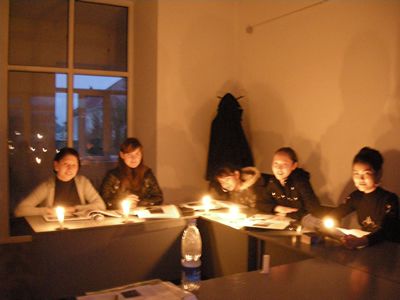 This was how my evening classes looked on many occasions: students studying by candlelight. This was a little problematic with a couple of my younger students, who liked to play with fire...
This was how my evening classes looked on many occasions: students studying by candlelight. This was a little problematic with a couple of my younger students, who liked to play with fire...

My headlamp was absolutely the BEST thing I brought with me. Not so useful for teaching (I tried it once, and ended up shining a bright light in my students' faces), but WONDERFUL for planning lessons in the dark... which was how I planned most of them!
There were a lot of things that I wished I'd had with me while I was in Kyrgyzstan, things that would have made working in a no-electricity environment a lot easier. I'm planning to go back this coming summer, assuming everything works out. I know that there are still power outages, even in Bishkek (although I'm not sure if they're still occurring with as much frequency as they did back in 2008) - and I'm actually planning on working in a small, rural village (through a volunteer program set up by The London School), where I imagine regular, reliable electricity will be even less likely than in Bishkek.
Based on my experiences - and the things I wished I'd had - I've gathered a bunch of items to take with me this summer. These things are small and lightweight and would be very useful for anyone planning to teach in an environment where electricity is unreliable or absent altogether. (And to be perfectly honest, these are also useful things to have on hand in general in case of a natural disaster.)
For starters, get a headlamp! I cannot even begin to express how useful my headlamp was. The one that I brought with me to Kyrgyzstan was battery powered, and while the batteries lasted a pretty long time, they would still go dead periodically. Inevitably, this would occur late at night while I was planning lessons. The solution to this is a wind-up headlamp. I recommend the Mitaki-Japan Wind-Up LED Headlamp. The light from this thing is just as bright, if not brighter, than my battery powered headlamp - and you never have to buy batteries! Crank it for about a minute, and it will run for an hour and a half. This thing is wonderful.

Next up: Get a wind-up lantern or two. These things are small, lightweight, and relatively cheap. They're super bright - and unlike with candles, you don't have to worry about some of your younger teenage boys lighting things on fire in the middle of class if you're using them. I recommend the Wind 'N Go Mini LED Lantern. Just like the wind-up headlamp, it lasts for about an hour and a half off of one minute of cranking.
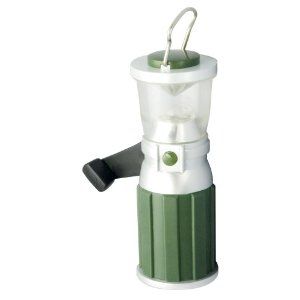
Remember how I mentioned that I had speakers for my ipod, but they were electric powered? Well, I've found some really great (and surprisingly loud) speakers that are battery powered: the Kinivo ZX220 Portable Twin Speakers. They come with a built in rechargeable battery, and can be charged through your USB cord, or a USB-to-power adapter. I'm not sure how long they last on a full charge, but it's at least two hours. (This also requires an ipod or other MP3 player.)
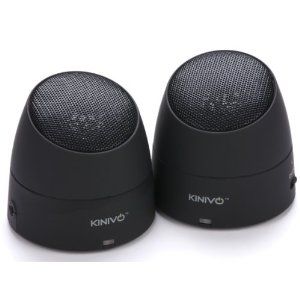 You can't tell from this photo, but these are very small (although like I said, they're also very loud).
You can't tell from this photo, but these are very small (although like I said, they're also very loud).
Now, your MP3 player and the above speakers are both powered by rechargeable batteries. This is great if you have a power source available on occasion - but what if you don't? What if you're working somewhere without any access to electricity? Well, there's a solution to that, too. It's the K-TOR Pocket Socket (which is seriously a wonderful name). Using a USB-to-wall-socket adapter (such as this or this) you can charge any rechargeable device with this thing... although it is a long process. Your item has to be plugged into the charger while you're cranking it, and it can take a good five minutes or so of winding to get enough juice to play one song on your ipod - still, if this is the only way you can bring audio into your class, it's definitely going to be worth it. And you can probably get a student to work the hand crank for you :-)

And lastly... how do you make copies without electricity to power a copy machine? Sadly, by hand. However, some good carbon paper is both reusable and it can allow you to get 3-4 copies from one time of writing. If you have a class of nine students, it's much easier to write a test or a worksheet three times (and get 9 copies using carbon paper) than to hand copy the same thing nine times! Roaring Spring Carbon Paper works really well.











![international [cat] lady of mystery](https://blogger.googleusercontent.com/img/b/R29vZ2xl/AVvXsEgnPJiUgfmMHEUcIPKDuSiTQFpnXgSofemne4WBX0VfEv-Bym8HdPHiD-iC2mNCJQog2tvPXKao_9vpRJG_vl4Yfi0ZTX_p3YpHLCie0rUHAJLgwcAb-Otj7hzc-_UkSI-yRNlpG45z8Wo/s1600/newblogtop2014b.jpg)

2 comments:
Annie Nimity, I've always loved this post of yours! Am posting it on my FB page for other teachers to read too :)o
Yay! :-)
Post a Comment